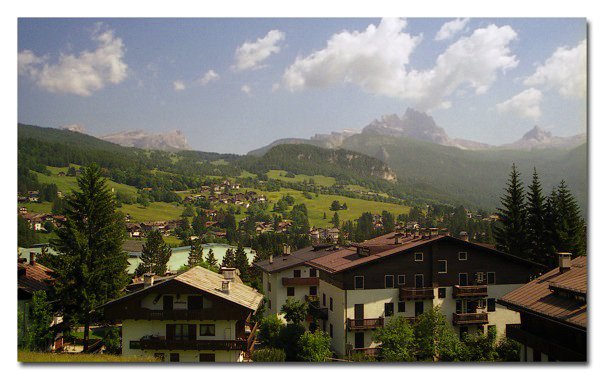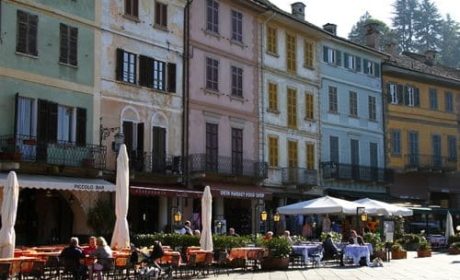Is this your first time in Venice? The Floating City has been a top Italian destination for well, forever. Recently, the Venice has made headlines for its efforts to crack down on rampant tourism that has overrun the iconic city for decades. However, that doesn’t mean you can’t enjoy a responsible trip to Venice these days.
Today’s guest contributor, Kris Bordessa from Attainable Sustainable, recently visited Venice for the first time. She’s here to share her best tips for exploring this incredible city on the water.
Table of Contents
Thing to know for your first time in Venice
It may be somewhat ironic that my husband and I traveled to Venice shortly before his retirement, rather than waiting until after, but I’m not one to let low airfares pass me by. The first stop on our northern Italy adventure? Venice.
We stayed in Venice Mestre, on the mainland and certainly made an impression on the local residents as we carted our luggage back and forth in search of our unmarked, hard-to-find lodging. Historic Venice—the island community—is half an hour or so away by bus.

Arriving on the island itself, we can feel just how different Venice is from other places we’ve visited. It’s busy, as many cities are, but the action is divided. There’s the Grand Canal, teeming with boats of all shapes and sizes, and there are the footpaths and bridges filled to capacity with pedestrians.
The pastel-colored buildings that line the canal give us a brief glimpse of what’s to come on our Venice adventure. Our three days in Venice fulfilled our expectations, but offered up some surprises, too.

Venice maps are unreliable
Consider maps of Venice to be more of a guide than an actual navigation tool. Even GPS doesn’t work reliably. The stories you’ve heard about people getting lost in Venice are true.
The city is a maze of unnamed alleyways and dead ends that is a delight to explore. It can also generate frustration for people who don’t like to be lost or those who have reached their upper limit of walking for the day.

A good tactic is to explore early in the day, and stick close to the Grand Canal when you’re close to calling it a day. Even so, you may hear the boats on the canal, but have trouble finding a route that takes you there.
We were lost—really lost—no fewer than five times while we were there. Ah, Venice for first timers. Such an adventure!
The water really is that high

Walking along the canals it’s easy to see steps covered with green algae or completely submerged during high tide. Homes situated on the canal often have a “garage” that opens up right to the water so residents can arrive by boat.
The famous aqua alta, a high tide coupled with certain weather conditions, causes flooding of open areas regularly during winter months. This may impact your visit, since popular sites like Piazza San Marco (St. Mark’s Square) can actually be submerged during an aqua alta.
The good news is, these flooding tides usually only last for several hours. Grab a gelato or aperol spritz while you wait out the tide.
Drinking water is free flowing

Bring your refillable water bottle with you to Venice—as in many other Italian cities, there are water fountains readily available with wonderful drinking water. No need to purchase plastic water bottles and add to the trash that must be carted away.
Everything is transported on the water in Venice

From FedEx packages to construction materials and wine, Venice canals are the arteries of the city. Even emergency services are provided by boat.
Boomer Travel Tip
In today’s travel climate, trip insurance is a must. Compare policies and rates at InsureMyTrip.
Venice has minimal green space

With buildings standing shoulder-to-shoulder along the canals, you’ll see plenty of beautiful window gardens, but parks and open spaces are hard to come by, however this Guardian article features 10 gardens and green spaces to visit. Giardini della Biennale on the southeastern tip of the island is a hidden gem and a great place to get away from the crowds.
Getting around Venice is easy—if you know how
You cannot drive cars in Venice. You’ll maneuver the city by foot or on the water, instead.
Parking in Venice is expensive
Piazzale Roma is the entrance to Venice, if you will. It’s the terminus of the bus route from Venezia Mestre, and the only part of the island on which cars are allowed.
If you’re traveling by car, you can reach Piazzale Roma via a causeway. Here, you’ll pay a hefty fee to park in a garage.
Buses transport passengers from Venezia Mestre to the island via the same causeway, so you can imagine how busy Piazzale Roma is as passengers disembark, residents come and go, and visitors try to maneuver their way around.
Perhaps a better option is to park in Venezia Mestre and hop on the bus, or skip the headache of driving entirely and arrive in Venice by train. Both the train station—Stazione di Venezia Santa Lucia—and Piazzale Roma have easy access to the Grand Canal, which is the main artery for getting around Venice.
Boomer Travel Tip
MedjetAssist Members who are hospitalized 150 miles from home receive medical transport to a home-country hospital of choice. Memberships from $99.
Getting around in Venice

The vaporetto (water bus) takes passengers to various locations throughout the Venetian lagoon (including the islands of Murano and Burano). ACTV is Venice’s transit authority; you can get a dual-purpose ticket that allows you to ride both the vaporetto and the bus (within as well as between Venezia Mestre and historic Venice).
Purchase a ticket for as many days as you’ll be in Venice and you can ride as much as you like. You’ll use the ticket to open the gates at vaporetto stops.
On the bus, be sure to validate the ticket once on board. They don’t check often, but inspectors are not kind if they discover that you’re riding without a validated ticket.
Snap a photo of the vaporetto route with your phone so you know which routes go where.
Water taxis are small private boats for hire. Much like a city taxi, they will pick you up and drop you off at specific locations. You might want to splurge on one of these to get to your hotel, if you are staying in Venice. But unless your budget is unlimited, they don’t make a lot of sense for traveling from site to site.
Gondolas are the traditional Venetian rowboat. These are not used for transportation, but are readily available as a fun diversion for visitors. A 40-minute ride runs about $80.
Boomer Travel Tip
Looking for a place to stay in Venice? Start your search for hotels in Venice with us!
Tips for being a responsible tourist in Venice

Tourists are a problem. That’s a hard truth for travelers to hear, right? Venice sees 30 million visitors a year. Compare that to the fact that just 55,000 residents live in the historic part of Venice.
When we visited, there were six cruise ships in port. Six. Fortunately that is no longer the case. In August 2021, large cruise ships were banned in Venice. Read more here.
One Italian woman we spoke to lamented that if something isn’t done soon, Venice will be nothing more than a Disney-style location as its citizens flee the overcrowding. The expense of living here is cost-prohibitive for locals and young people are moving away in droves she said.
If Venice is on your boomer bucket list, there are a few tactics you can take to make less of an impact on the residents.
- Be mindful that you are a visitor—and try to be a gracious one! Stay out of the way of delivery people. Don’t block the walking paths. Easy on the selfies.
- Choose hotels instead of AirBnB locations. It seems that residents are frustrated with the overcrowding caused by tourism in general, but also specifically with the fact that housing is less available to locals as it’s put into rotation for visitors.
- Skip the cheap tchotchkes and buy souvenirs that are created by local artisans. (Beware, for instance, the proliferation of “Murano” glass that’s not really authentic.)
- Seek out eateries that are run by locals.
- Consider traveling in the off-season. I’m told Venice is beautiful when it’s covered in snow.
How to save money and time when visiting Venice
Don’t spend your boomer vacation standing in line. As we all know, time is money, especially if you’re traveling on the trip of a lifetime.
Purchasing skip-the-line tours in advance is a smart timesaver, especially if they can be cancelled up to 24 hours in advance. And guided tours offer an in-depth look at a place that you won’t discover on your own. Combining the two is the best of both worlds:
- Skip-the-line tour of Doge’s Palace with guide book
- Venice Accademia Galleries Skip-the-Line-entrance
- Skip-the-line St. Mark’s Basilica Guided Tour
Extend your trip to Venice
After exploring Venice, spend a few days traveling north to less touristy Turin. Tour the shroud (or its replica), the Egyptian Museum and the beautiful UNESCO Heritage palaces.



